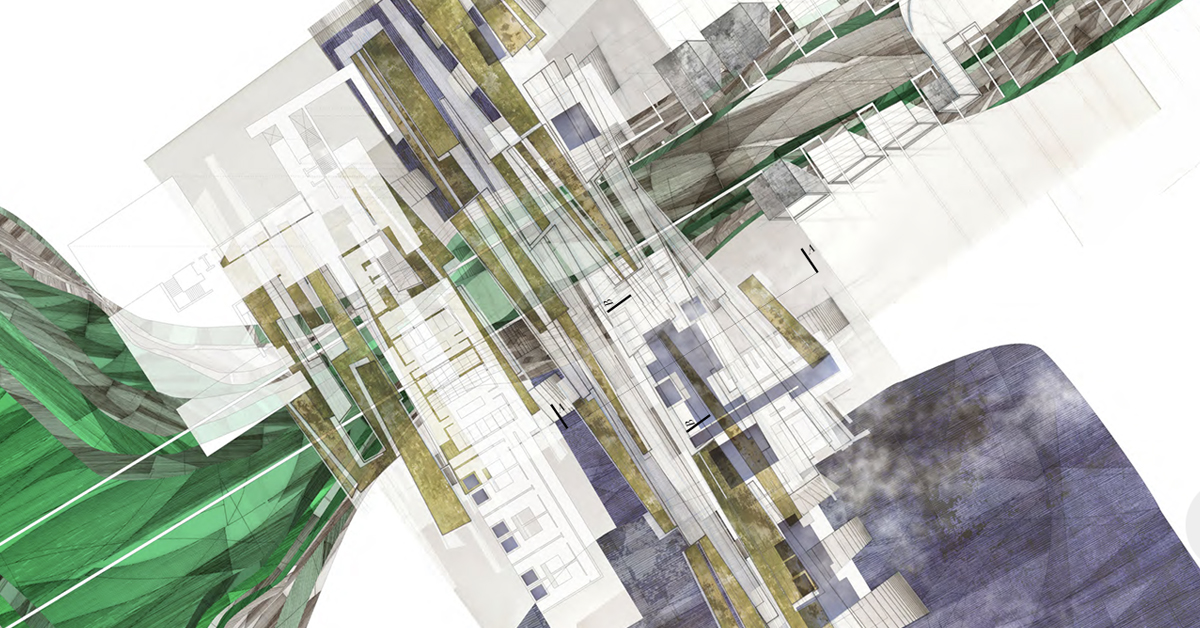
Despite some overlap, there are many distinctive differences between architecture and landscape architecture. Read on to discover each discipline’s unique approach to shaping our built and natural environments, as well as the skills and training you’d need to successfully embark on a career in this area.
What is architecture?
Architecture is a rich blend of art and science; it involves the planning, designing and construction of physical structures that meet human needs and improve quality of life. This discipline involves designing and creating of structures, buildings and spaces that not only serve functional purposes, but also take aesthetic, cultural, social and environmental considerations into account.
Careers in architecture are wide ranging. From Sustainability Consultants and Project Managers to Architects and Urban Planners, there are many roles which fall under the architecture umbrella.
What is landscape architecture?
Similar to architecture, landscape architecture involves planning, designing and construction, but this time the focus is on outdoor spaces at a range of scales including gardens, yards, parks, waterfronts, campuses, grounds and various other planned green outdoor areas. Essentially, Landscape Architects plan, design and manage the landscapes we live, work and socialise in.
The aim of landscape architecture is to design healthy environments for communities and nature. This is done by creating environments that are functional, aesthetically pleasing and ecologically sustainable, while considering the natural environment, cultural context and social needs.
What are the key differences between architecture and landscape architecture?
Some of the key differences between the two disciplines include:
Focus
Architecture primarily focuses on the design and construction of buildings and structures, whereas landscape architecture centres on designing outdoor spaces.
Scale of design
Architecture typically operates on a smaller scale, focusing on individual structures, compared to landscape architecture. In contrast, it addresses a range of scales from individual gardens to larger outdoor areas, as well as their relationship with the surroundings, people and animals that interact with them.
Key considerations
Architecture places more focus on ergonomics, functionality, occupancy and building safety regulations, compared to landscape architecture focusing more on environmental sustainability, ecological balance and how people, animals and plants interact with outdoor spaces.
Education and training of professionals
Landscape Architects are generally trained with a focus on site planning, horticulture, environmental considerations and ecology. On the other hand, architects are more likely to be trained in construction, materials, building design and systems. Read on for more on landscape architecture courses and jobs.
Working in landscape architecture
Although no single career path is exactly the same, most people find that to be considered for a reputable landscape architecture job in the UK, you may require:
- An undergraduate degree in Landscape Architecture or a similar field, an NVQ Level 3 Landscape Construction collage course or a Level 3 Landscape Technician apprenticeship
- Professional work experience in landscape architecture for 1+ years.
- If you already have a degree in a related subject like architecture, horticulture or botany, you may wish to complete a postgraduate degree specialising in landscape architecture.
If you’re considering a career in landscape architecture, it’s worth noting that you can apply for jobs within landscape architecture firms, government agencies or private sectors.
Landscape architecture courses: Start your landscape architecture journey
With the power to make such a difference to the environment, people and communities, it’s no surprise jobs in landscape architecture are so in demand.
Whether you’re already working in the field or transferring from a related subject area, choosing to study an MA in Landscape Architecture Studies ensures you’ll have the valuable, transferable skills and practical knowledge needed to start your journey to becoming a Landscape Architect.
This two-year course is part-time and fully online, and provides a solid basis for further education, career development and work in a variety of areas, as well as opportunity for specialised study:
Related posts
What’s green & blue infrastructure planning?
Discover the power of green and blue infrastructure planning to create sustainable, resilient, and...
Read the storyWhat is urban design?
Uncover the importance of urban design and its transformative power in creating vibrant,...
Read the storyHow can landscape architecture improve health?
Learn about the concept of healthy landscapes and their impact on physical and mental health.
Read the storyStart your creative journey here.
Want to chat or ask a few questions? Fill this in and we’ll give you a call back.
